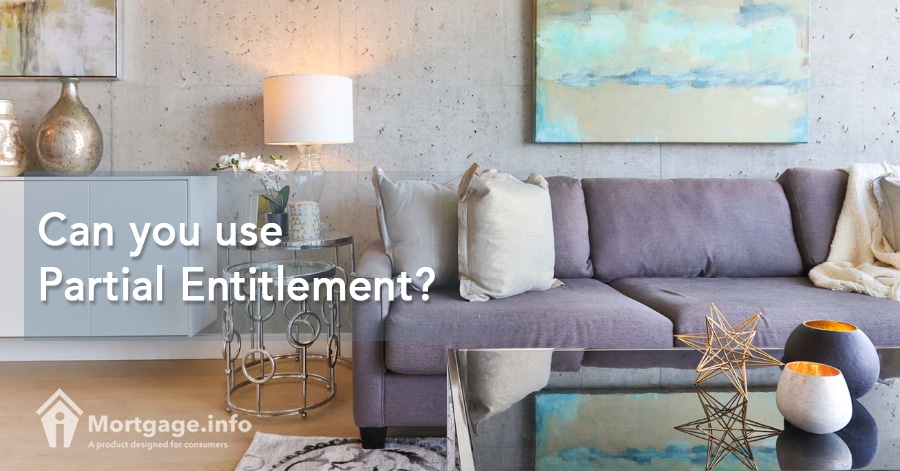
As a veteran, you receive entitlement to purchase a home up to $484,350 with no down payment if you have full entitlement. But what happens when you don’t have full entitlement any longer? You can have entitlement tied up in your current home or you could even lose some if you lost a home to foreclosure.
Looking for Current Mortgage Interest Rates? Click Here.
Luckily, you can use your partial entitlement. What happens with it will depend on the amount you have left.
Partial Entitlement That Covers Your Purchase Price
Some veterans have enough partial entitlement to cover the purchase of another home. Veterans generally have access to entitlement of $484,350; this means that some veterans can purchase two homes with this single amount. Let’s say you bought a home for $200,000. This would leave you with an additional $284,350 to use in the future.
Now typically, you can only have one home with VA financing. This is because VA financing is for owner-occupied properties, but there’s an exception to the rule. The VA will grant a one-time exception to veterans that want to move out of their current home with VA financing, but keep it. In order to do so, you must prove that you have to move for a valid reason, such as:
- Your family size outgrew your home
- Your job move and the commute is no longer doable
If the VA does allow the exception, you will have to refinance the loan with the VA IRRRL otherwise known as the VA streamline loan. You can then use your remaining entitlement to purchase another home.
If your entitlement covers the full amount of the new home, you will not need a down payment on it. Using the above example, if you find a home for $284,350 or less, you will not need to put money down on the home.
Partial Entitlement That Doesn’t Cover Your Purchase Price
More often, partial entitlement doesn’t cover the full purchase price. While this doesn’t mean you cannot get a VA loan using your entitlement, it does mean you will need a down payment. The amount of entitlement that you have is the amount of the loan the VA will guaranty. Lenders rely on this guaranty because it means the VA will pay them back 25% of the amount you default on if you stop making your payments.
Click to See the Latest Mortgage Rates.
If you don’t have enough entitlement to cover the purchase price, the lender will need you to make a down payment. This down payment covers the portion of what the VA will not guaranty. Typically, you must make a down payment that is equal to 25% of the difference between the purchase price and your remaining entitlement. For example, if you have $200,000 in entitlement but you want to buy a home for $250,000, you will need to make a down payment of $12,500. This covers the lender should you default on the loan.
Qualifying for a VA Loan
Now just because you have entitlement left doesn’t mean that you can use it. You have to prove that you are eligible for the VA loan. The VA does have relaxed guidelines for their loans, though. They are as follows:
- 620 credit score – This may vary by lender; the VA doesn’t have a specific score, but this is the average minimum credit score that lenders require
- 43% total debt ratio – The VA doesn’t look at your housing ratio, but they prefer that your total debt ratio doesn’t exceed 43% of your gross monthly income
- Enough disposable income – The VA does have strict disposable income guidelines. You must have enough income to cover your monthly costs, plus have money left over according to your location and family size
- Reliable income/employment – You must prove that you have stable income and/or employment to cover the cost of the mortgage
- No foreclosures or bankruptcies – You must be at least 2 years out from a bankruptcy discharge or foreclosure in order to get a VA loan
If you meet these requirements and you have enough entitlement (or partial entitlement), you may be in good shape to get the VA loan that you need.
